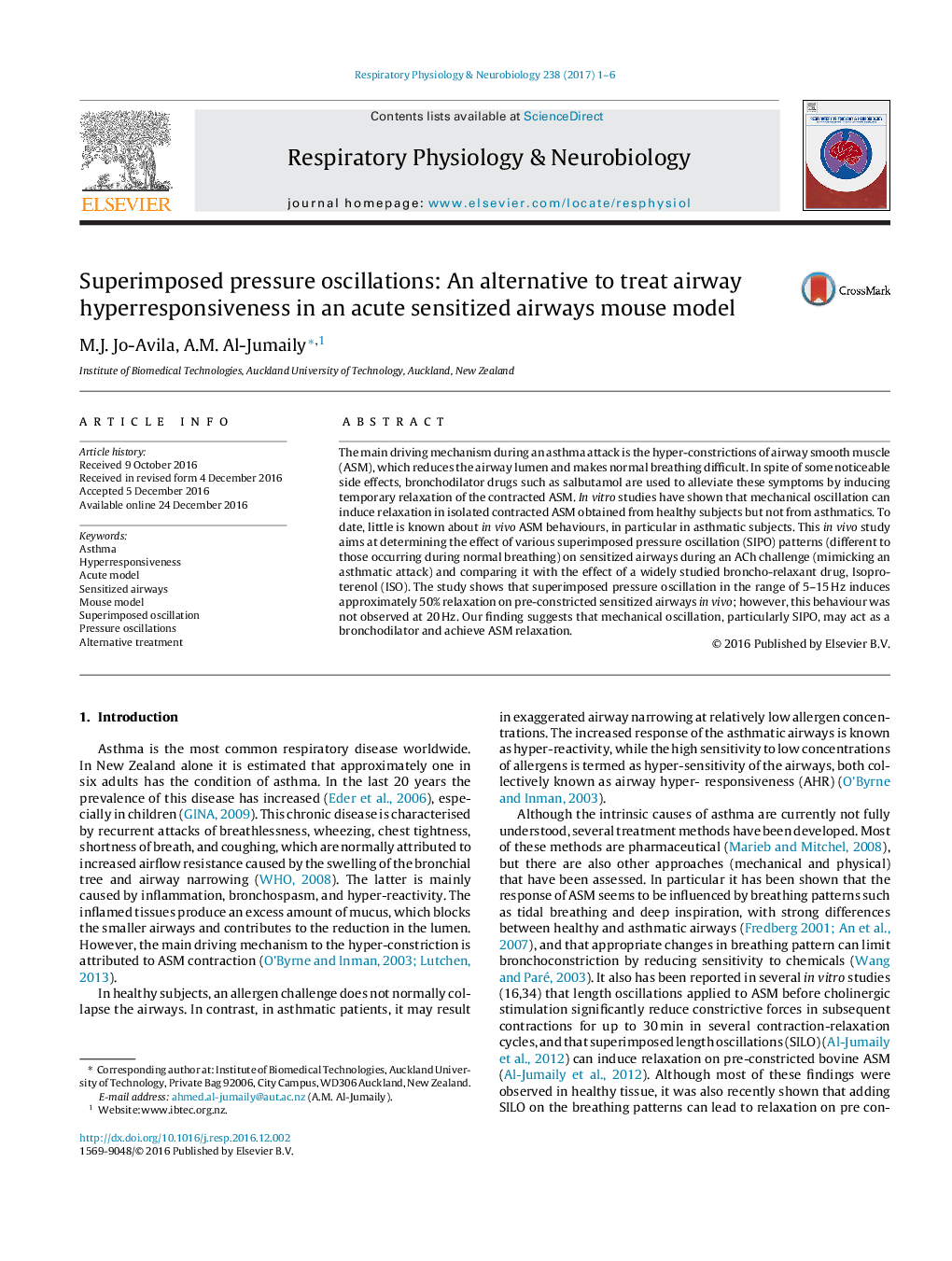| Article ID | Journal | Published Year | Pages | File Type |
|---|---|---|---|---|
| 5594241 | Respiratory Physiology & Neurobiology | 2017 | 6 Pages |
â¢A sensitized mouse model was developed to investigate acute airway constrictions.â¢Pressure oscillations with various frequencies are used to produce bronchodilation.â¢Pressure oscillations with frequencies 5-15 Hz induced 50% airway relaxation.â¢No confirmed airway relaxation was observed at 20 Hz.â¢Superimposed pressure oscillation may act as a bronchodilator and achieve ASM relaxation.
The main driving mechanism during an asthma attack is the hyper-constrictions of airway smooth muscle (ASM), which reduces the airway lumen and makes normal breathing difficult. In spite of some noticeable side effects, bronchodilator drugs such as salbutamol are used to alleviate these symptoms by inducing temporary relaxation of the contracted ASM. In vitro studies have shown that mechanical oscillation can induce relaxation in isolated contracted ASM obtained from healthy subjects but not from asthmatics. To date, little is known about in vivo ASM behaviours, in particular in asthmatic subjects. This in vivo study aims at determining the effect of various superimposed pressure oscillation (SIPO) patterns (different to those occurring during normal breathing) on sensitized airways during an ACh challenge (mimicking an asthmatic attack) and comparing it with the effect of a widely studied broncho-relaxant drug, Isoproterenol (ISO). The study shows that superimposed pressure oscillation in the range of 5-15Â Hz induces approximately 50% relaxation on pre-constricted sensitized airways in vivo; however, this behaviour was not observed at 20Â Hz. Our finding suggests that mechanical oscillation, particularly SIPO, may act as a bronchodilator and achieve ASM relaxation.
